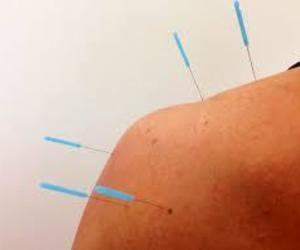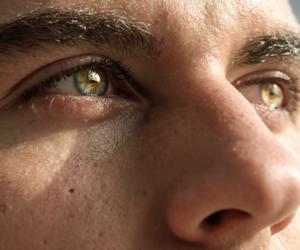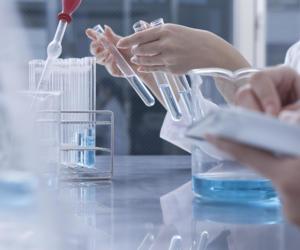Muscular Dystrophy: Cellular Antennae Play Key Role in Muscle Loss

As humans age, it is common for muscle cells to diminish and be exchanged with fat cells. It is a slow process as one cell after another is exchanged. However, this process quickens when a muscle is injured. The worst case occurs in muscle wasting diseases like Duchenne muscular dystrophy. A scientist at San Francisco has proven that cellular antennae found on fat- forming cells in muscle play a significant role in muscle-fat transformation. These cellular antennae are called cilia.
The study involved experiments with mice and suggested a connection between tissue renewal and cilia. This advancement in molecular understanding could lead to new ideas for regenerative medicine. It could also help researchers one day to improve muscle renewal during disease and aging. This study was published on July 13, 2017.
People have always thought that the cause of impaired mobility and loss of strength is high levels of intramuscular fat and more falls in obese or elderly individuals and patients with DMD. Jeremy Reiter who is a biophysics and biochemistry professor at UCSF and also a senior author of the study said that the study help in laying the foundation of learning the aging of muscles and offers methods of improving muscle repair.
Progression of research
Jeremy has researched tiny cellular appendages for a long time. He has done a lot of the investigation mainly on primary cilia. Primary cilia somehow look like cellular tentacles that paramecia use to gather food and move. However, primary cilia are stationary. Instead, primary cilia stand stiffly on the surface of all the cells which include bone cells, skin cells, neurons, and some stem cells.
Many years have passed, and research have kept improving, but these little attachments have always been ignored. They have always been considered vestigial structures with unknown functions. In the past ten years, there has been some research on these cilia as researchers want to know what they do. Recent studies by Jeremy, members of the lab and other researchers showed that primary cilia act just like cellular antennae. They receive molecular cues from adjacent cells and process environmental signals like temperature, light, gravity and salt balance.
Studies on early stages of embryo development have resulted in some of the best examples of cilia function. The limb receives cues from hedgehog (cell signaling pathway). This specifies the number of digits to have on the hands and feet. It also tells the pinky how to develop and not be like the thumb. If there is a defect in cilia, then it can disrupt the interpretation of signals which will lead to extra toes and fingers.
Daniel Kopinke, the first author of the study and a postdoctoral fellow in Jeremy’s lab, did research on whether cilia signaling was involved in healing the muscles after an injury. Daniel wanted to know if primary cilia had other roles beyond development. He also wanted to know if main cilia played any role in retaining adult tissues.
Other studies
Other studies have shown that during muscle injury, the fat-forming cells near the muscle cells divide and differentiate into fat cells. The fat-forming cells are called fibro/adipogenic progenitors. Daniel found that this fat –forming cells carry primary cilia. He also discovered that a muscle injury increased the level of fat-forming cells with cilia. With these observations, it was evident that cilia might be participating in fat formation.
To test the hypothesis, the researchers used two mice of muscle injury. The first mouse model was an acute injury which was created when damaging agents were injected into mouse muscles. The second one was a chronic injury with progressive loss of fibers in the muscle such as those seen in Duchenne muscular dystrophy. The scientist then genetically blocked fat-forming cells ability to form cilia. They found that both models showed low amounts of fat in the muscle. This experiment demonstrated that loss of cilia led to a loss of fat and that it aided in muscle regeneration.
Daniel said that it was unexpected. They converted the muscle in a mouse model of Duchenne muscular dystrophy into a muscle that resembled the muscle of a normal mouse.
Several experiments showed that genetically engineering cells with no cilia had led to low-level activation of Hedgehog pathway. It was enough to block degeneration of skeletal muscle. The researchers used other ways of amplifying Hedgehog signaling and found that mouse muscle became less fatty.
As Daniel was sitting at the microscope and realize that all the fat had gone, he was happy that he had proven the Hedgehog connection. He almost felt like dancing.
Another crucial protein
On further investigation, the scientists found that TIMP3, a crucial protein in Hedgehog pathway, was responsible for this effect. The researchers used small molecules called batimastat to mimic the effects of TIMP3 and were able to block fat formation induced by injury in the muscle. The scientist is currently searching for other molecules which can have the same effect. It could potentially help in finding a cure for muscle loss due to injury and age in humans.
Daniel is hopeful that maybe one day they could use the knowledge they acquired in research to improve muscle function since they have handled the cell types that converts muscle into fat and handle signaling pathway that controls the conversion of muscle to fat.
These findings that were revealed in several experiments with mice showed the connection between tissue renewal and cilia. This molecular understanding could help in coming up with medicine that improves muscle renewal as people age.
The study is not only good news for Duchenne muscular dystrophy patients but also obese and seniors. This study has shown that cilia play a significant role in muscle to fat transformation. Further investigation will help in fighting the disease.
Conclusion
An injured muscle regenerates but in muscular dystrophies, and during aging, the muscle is replaced with fat. During injury, fibro/adipogenic progenitors proliferated leading to an increase in adipocytes. These FAPs produced by primary cilia. Primary cilia transduce intercellular cues like Hedgehog signals. When cilia are genetically removed from the FAPs, inhibits intramuscular adipogenesis. Blocking FAP ciliation enhanced enhance myofiber regeneration after injury which reduced myofiber size decline in a mouse with muscular dystrophy. Hedgehog signaling through cilia regulated TIMP3. TIMP3 is a secreted metalloproteinase inhibitor. TIMP3 inhibit MMP14 blocking adipogenesis. A model of TIMP3 blocked FAPs to adipocytes conversion which can help in fighting fatty degeneration of muscle. Therefore, ciliary hedgehog signaling by FAPs helps in regenerative response to muscle injury.
Source
https://www.ucsf.edu/news/2017/07/407681/tiny-cellular-antennae-key-fat-formation-muscle
















